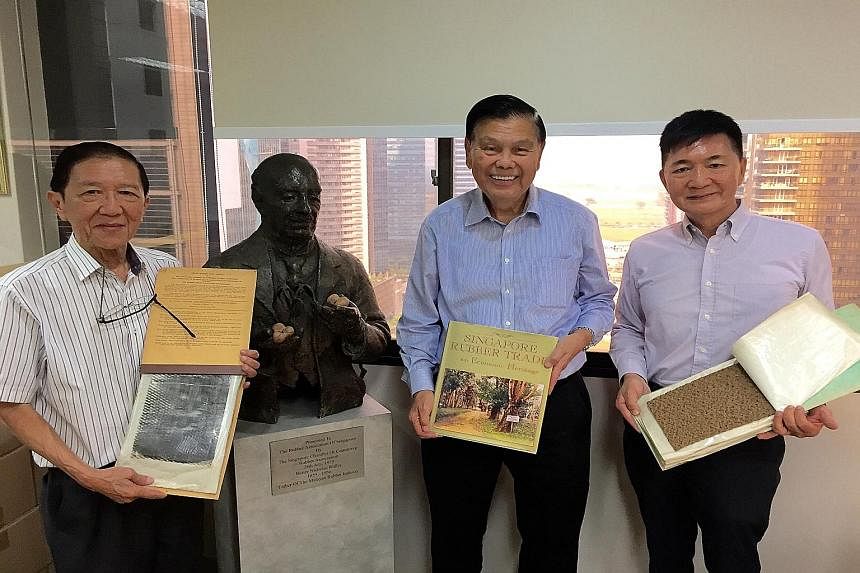Singapore was a major sorting and export centre for rubber from the 1900s to the 1960s, during which the trade picked up and boomed.
The Singapore Botanic Gardens played a pivotal role in that growth, as research into the crop allowed the gardens' first scientific director, Sir Henry Nicholas Ridley, to devise a rubber-tapping technique that yielded maximum quantities of latex without destroying the trees.
The gardens' role in plant research and its studies of rubber for cultivation were major factors that earned it the status as a Unesco World Heritage Site last Saturday.
Since the rubber trade declined, its role in Singapore's history has been largely forgotten by the public.
Given the gardens' intricate ties with rubber, the 105-year-old Rubber Trade Association of Singapore hopes the new status will help "boost awareness about rubber's economic heritage among younger generations of Singaporeans".
Mr Peter Tan, 71, a board member of the association, said: "We don't have rubber trees lining the country that can serve as reminders, but it's still a shame that some kids today might not even know how rubber feels like in their hands."
He recalled how Singapore was home to 15 rubber factories at one point. These factories came with mills and smoke houses, which cleaned the rubber and extracted moisture from the material.
Rubber, used in the production of tyres, was one of two commodities that built up Singapore's economy - the other being tin, said Mr Tan.
The rubber boom traces back to London's Royal Botanic Gardens, Kew, which gifted the gardens here 22 rubber seedlings in 1877.
A dozen of them were planted in the gardens and studied to gather data about cultivation methods over the next two decades.
Sir Henry often visited Straits Settlements plantation owners with his jacket pockets filled with rubber seeds from 1,000 mature trees growing in the gardens.
"He believed so much in the value of rubber as a commercial crop for the region... He encouraged many to plant the crop," said Mr Tan.
The first to do so was Singaporean Chinese and tapioca estate owner Tan Chay Yan, grandson of Mr Tan Tock Seng. By 1901, he had a rubber plantation that spanned 1,200ha near Malacca.
Other Chinese entrepreneurs, such as Tan Kah Kee, Lim Nee Soon, and Lee Kong Chian, also started rubber businesses, which were handed to their descendants.
"The fortunes of many of Singapore's early millionaires were built on the rubber trade," said Mr Teddy Chua, 73, another board member of the association.
When he was 17, Mr Chua, who owns Eastland Produce, used to walk on Boat Quay's gangplanks to inspect rubber bales that pulled up in tongkangs (light wooden boats) at the Singapore River. He would grade them and ring up a manager at his father's rubber plantation, Hua Heng, who would price them and make a bid to the rubber owner.
Hua Heng was about 32,000 sq m, or about the size of six football fields.
Rubber packing and processing activities in Singapore declined in 1963, after Indonesia stopped exporting the raw material to be processed in Singapore following the start of Konfrontasi. Some firms, including Hua Heng, went under.
Today, Thailand, Indonesia and Vietnam are the main suppliers of rubber to the world, producing 12 million tonnes in total each year - more than 70 per cent of the world's supply.


